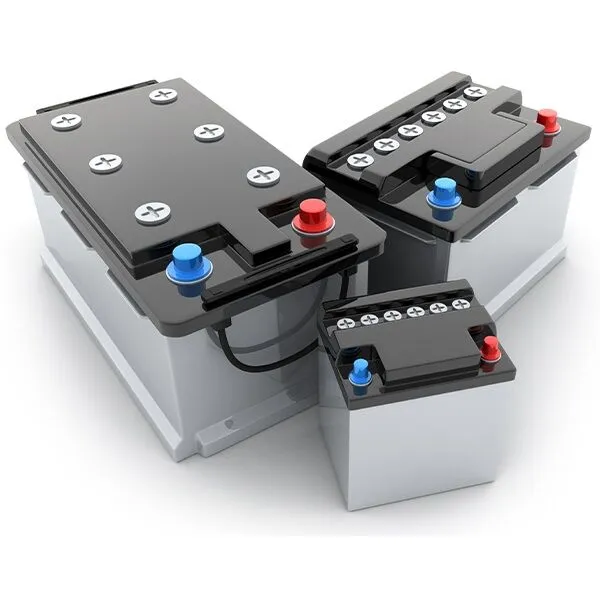When it comes to driving, few components are as essential as your car battery. It’s not just a box of chemicals under the hood—it’s the heart of your car’s electrical system. From starting the engine to powering lights, infotainment, and safety features, the battery is working every time you turn the key or press the start button.
In this guide, we’ll explore the different types of car batteries, their strengths and weaknesses, and how to choose the right one based on your driving style.
Introduction to Car Batteries
Modern vehicles rely heavily on electronics for safety, performance, and convenience. Batteries no longer just start the engine—they also support regenerative braking, start-stop systems, and advanced driver-assist features.
With today’s variety of vehicle technologies, not all batteries are created equal. From traditional lead-acid models to advanced lithium-ion packs found in electric vehicles (EVs), choosing the right one can impact your car’s reliability, fuel efficiency, and maintenance needs.
Key Functions of a Car Battery
Every car battery is designed to:
- Start the engine by delivering high cranking power.
- Power electrical systems such as headlights, infotainment, and climate control.
- Maintain voltage stability to protect sensitive electronics.
- Support stop-start systems in modern vehicles.
Different technologies meet these demands in different ways, which is why knowing the types matters.
Types of Car Batteries
1. Lead-Acid (Flooded)
- Overview: Oldest and most affordable type.
- Lifespan: 3–5 years (with maintenance).
- Pros: Low cost, easy to find, fully recyclable.
- Cons: Heavy, requires topping up with distilled water, poor deep-cycle performance.
2. Enhanced Flooded Battery (EFB)
- Overview: Improved version of lead-acid, designed for start-stop vehicles.
- Lifespan: 4–6 years.
- Pros: Affordable upgrade for modern cars, better cycling durability.
- Cons: Shorter life than AGM or lithium-ion.
3. Absorbent Glass Mat (AGM)
- Overview: Sealed design using fiberglass mats for durability.
- Lifespan: 5–7 years.
- Pros: Great for start-stop systems, vibration-resistant, strong cold-weather starting.
- Cons: More expensive, sensitive to overcharging.
4. Gel Cell
- Overview: Uses gel-based electrolytes, designed for deep-cycle use.
- Lifespan: 5–7 years.
- Pros: Ideal for RVs and off-road, highly stable in tough conditions.
- Cons: Poor cold-weather performance, needs a special charger.
5. Lithium-Ion
- Overview: Found in EVs and hybrids. Lightweight and high efficiency.
- Lifespan: 8–15 years (with proper management).
- Pros: Long-lasting, fast charging, high energy density.
- Cons: Very expensive, requires a battery management system (BMS).
Performance Factors: CCA and RC
Two key ratings define battery performance:
- Cold Cranking Amps (CCA): Measures the battery’s ability to start in cold weather.
- Reserve Capacity (RC): Indicates how long the battery can power essential electronics if the alternator fails.
AGM and lithium-ion batteries usually rank the highest in both categories, making them excellent for advanced vehicles.
Maintenance Needs by Battery Type
- Lead-Acid: Requires regular fluid checks and terminal cleaning.
- EFB: Lower maintenance than standard lead-acid but benefits from periodic testing.
- AGM & Gel: Sealed and low-maintenance, but must be charged with the correct equipment.
- Lithium-Ion: Minimal user maintenance, but depends on a working BMS.
Effect on Fuel Efficiency & Emissions
Modern batteries don’t just power electronics—they also help save fuel and reduce emissions:
- Support for start-stop systems lowers idle fuel use.
- Enable regenerative braking in hybrids/EVs.
- Reduce alternator load, improving efficiency.
- Excel in city driving, where stop-and-go traffic demands higher battery performance.
Environmental Considerations
- Lead-Acid: Highly recyclable (over 95%), but production involves toxic materials.
- AGM/Gel: Safer but still lead-based.
- Lithium-Ion: Cleaner in use but environmentally costly to mine and harder to recycle.
Choosing the Right Battery for Your Driving Habits
- Daily Commuter: AGM or EFB—reliable, low-maintenance, supports start-stop systems.
- Weekend/Occasional Driver: Gel or AGM—low self-discharge, holds charge during inactivity.
- Off-Road/RV Enthusiast: AGM deep cycle or Gel—shock-resistant, handles deep discharges.
- EV Owner: Lithium-Ion—lightweight, long-lasting, efficient.
- Cold Climate Driver: AGM—high CCA ensures reliable starts in freezing temperatures.
Conclusion
Your car battery isn’t just an accessory—it’s a key performance partner. Whether you need affordability, durability, or cutting-edge technology, the right battery choice improves reliability, fuel efficiency, and overall driving experience.
- Lead-acid works for budget-friendly needs.
- EFB and AGM balance cost and modern demands.
- Gel batteries shine in off-road or occasional use.
- Lithium-ion leads the way in EVs and long-term performance.
Match your battery to your vehicle and driving habits, and you’ll enjoy fewer breakdowns, lower maintenance, and better performance. And while you’re at it, don’t forget to keep your vehicle’s interior and exterior in top condition with professional car detailing for the ultimate driving experience.
FAQs
- Which car battery lasts the longest?
Lithium-ion (8–15 years) and AGM (5–7 years) typically last the longest. - Is AGM better than lead-acid?
Yes. AGM offers better cold starts, durability, and vibration resistance. - Is lithium-ion the best for performance?
Yes, especially in EVs. They’re lighter, faster-charging, and more efficient. - How does climate affect battery life?
Heat shortens lifespan. AGM and lithium-ion handle temperature extremes better. - Can I replace my lead-acid with AGM or lithium-ion?
In many cases, yes—but always check compatibility with your vehicle’s charging system.


